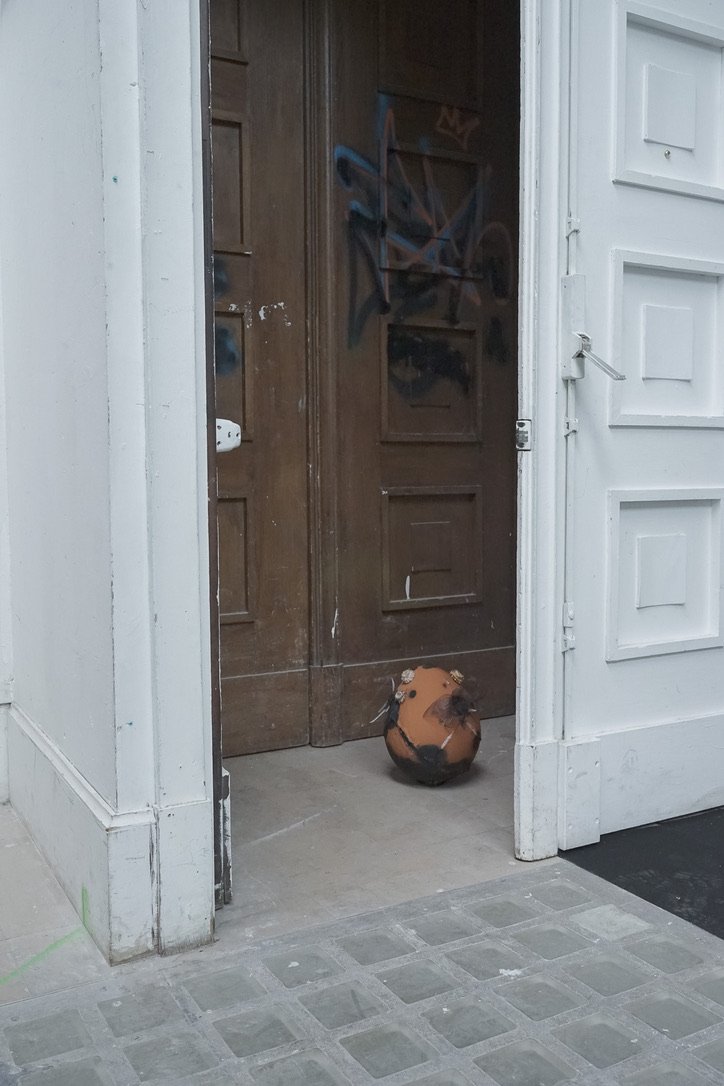
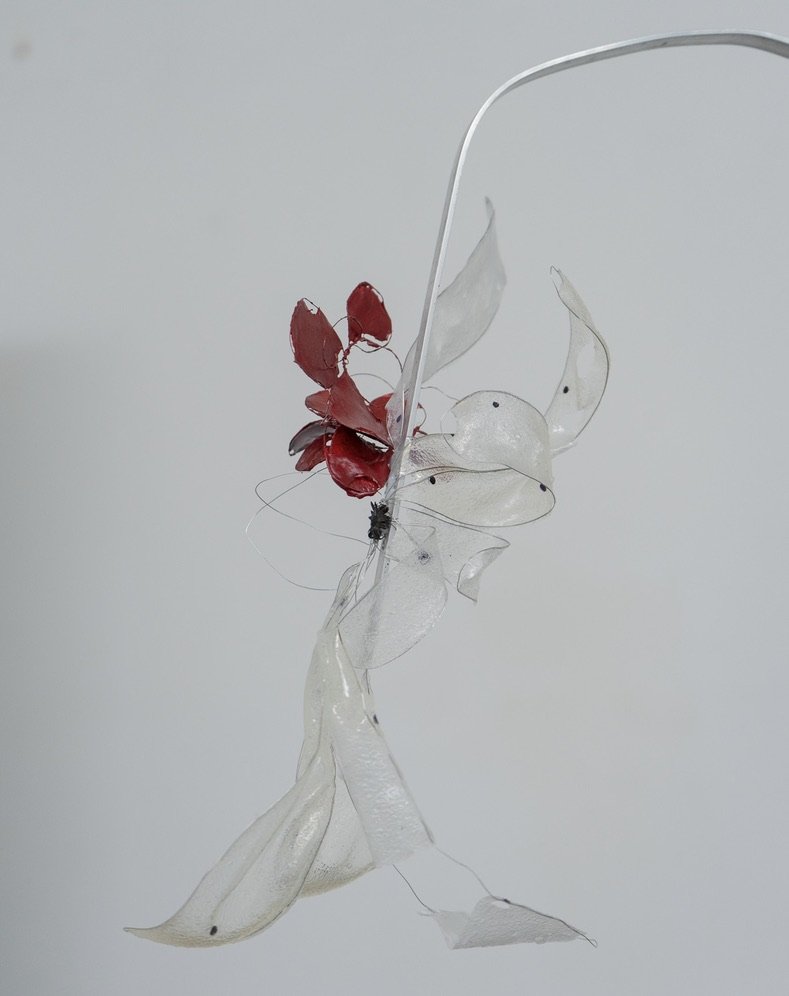
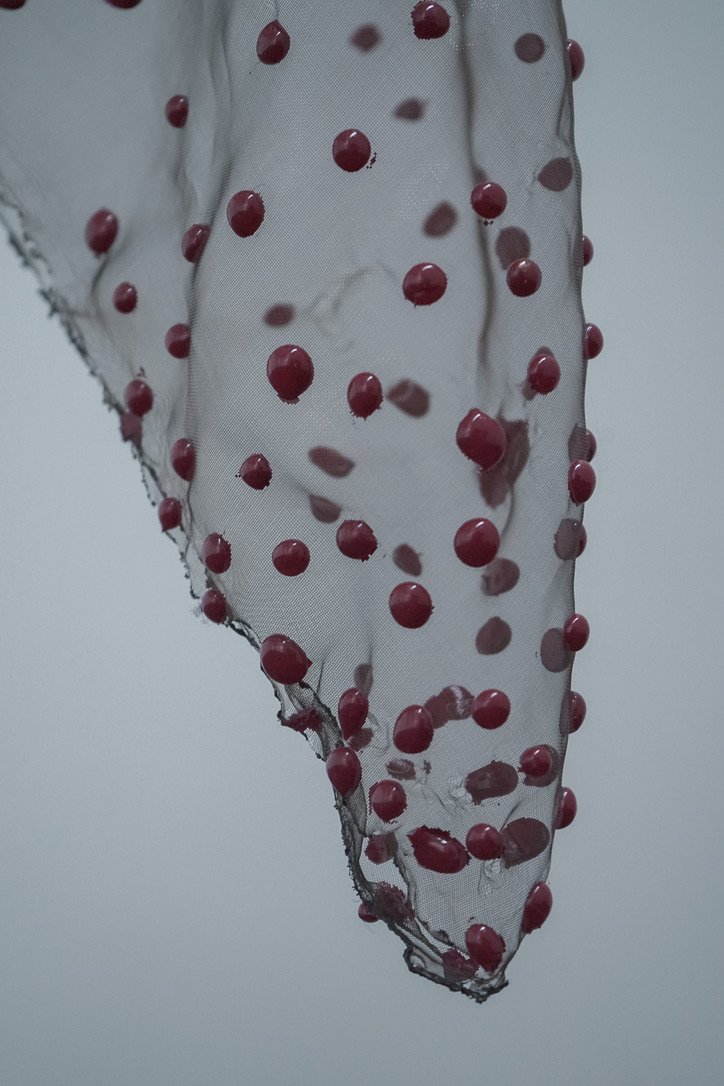
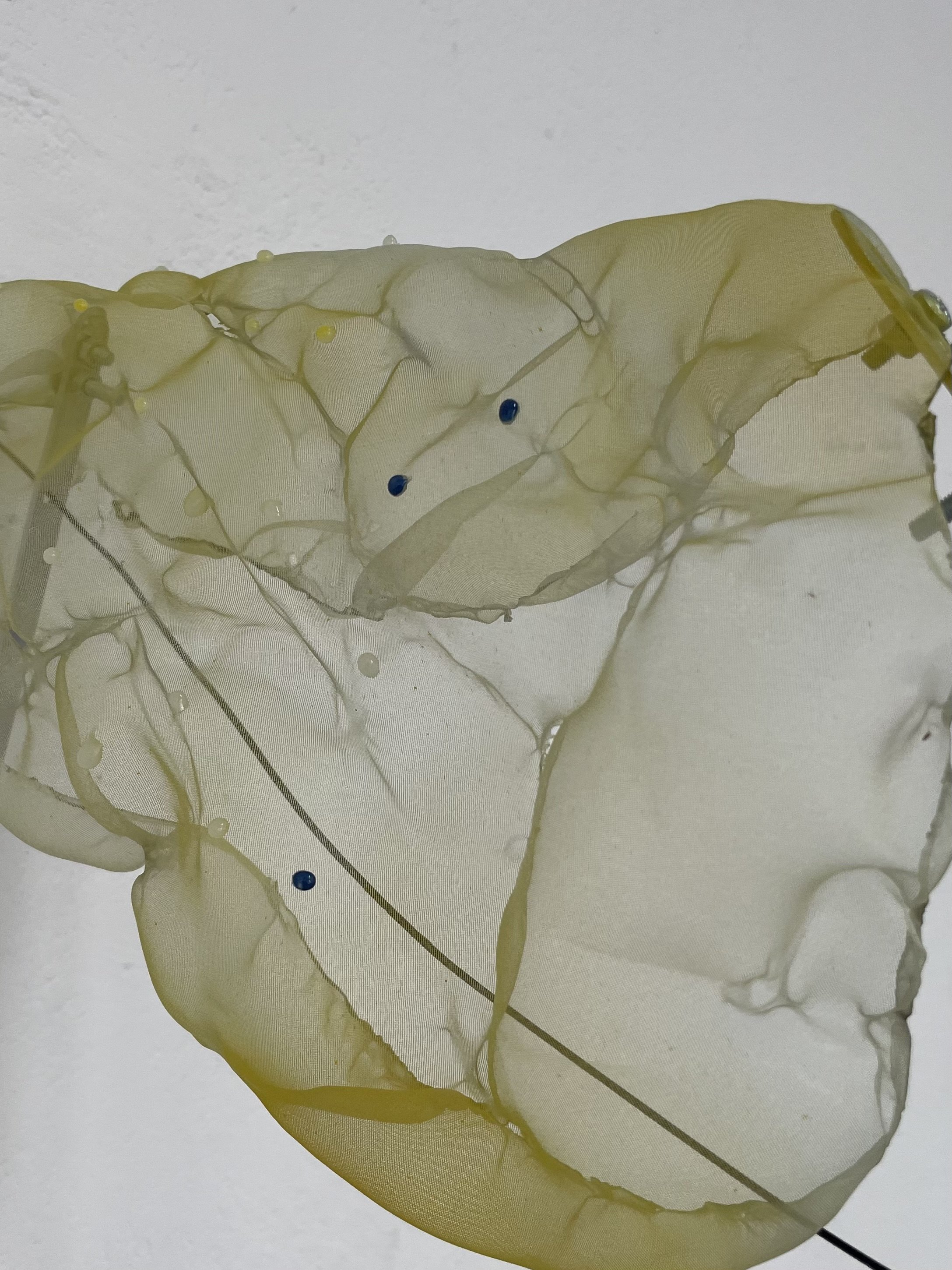
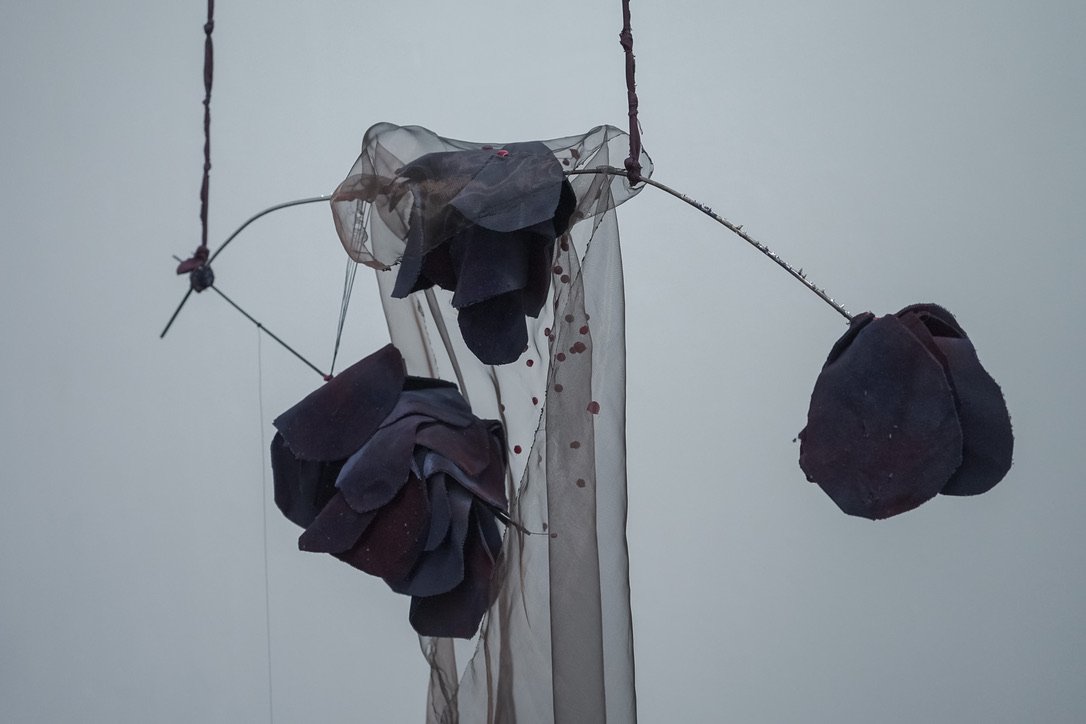
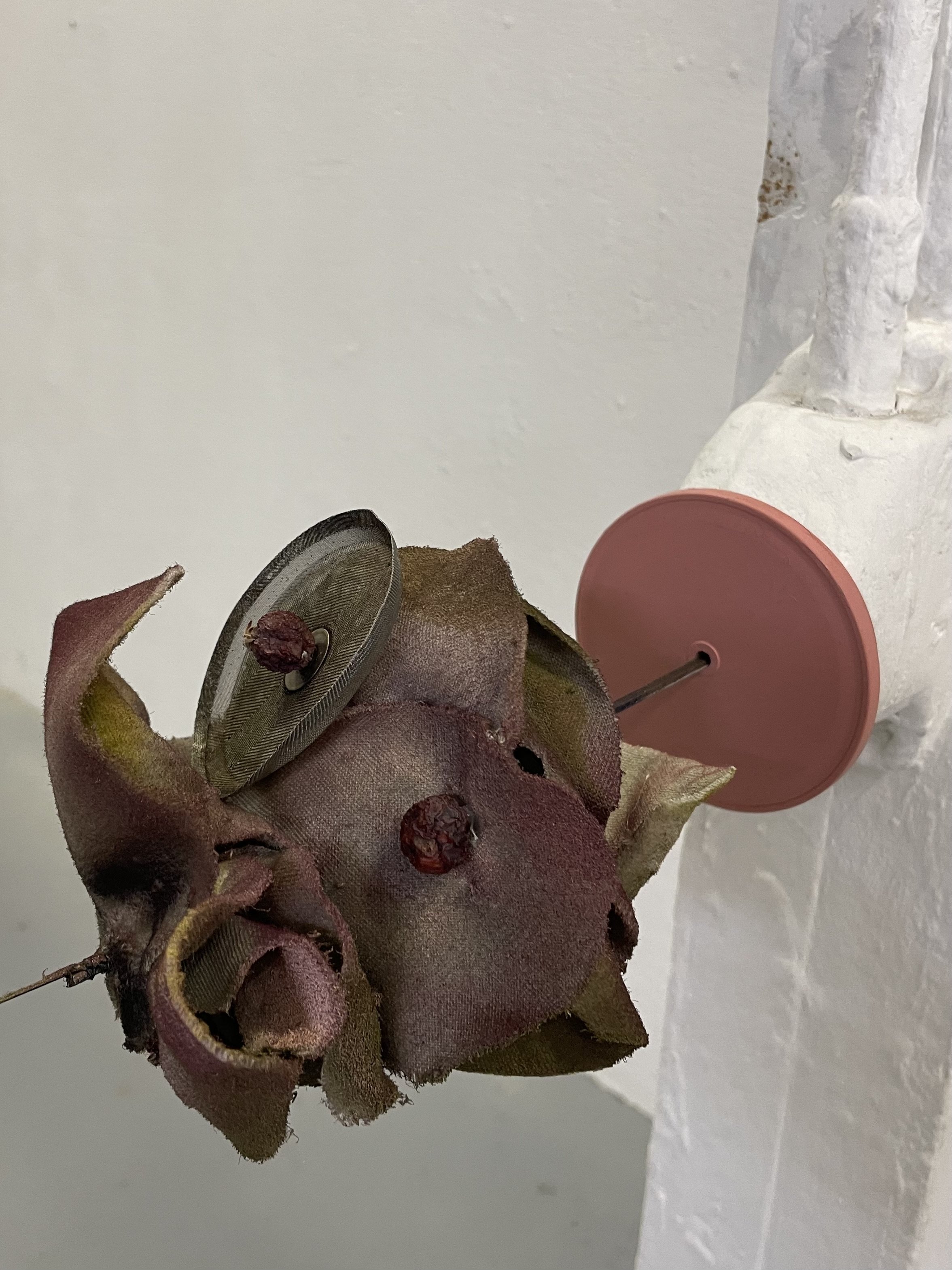

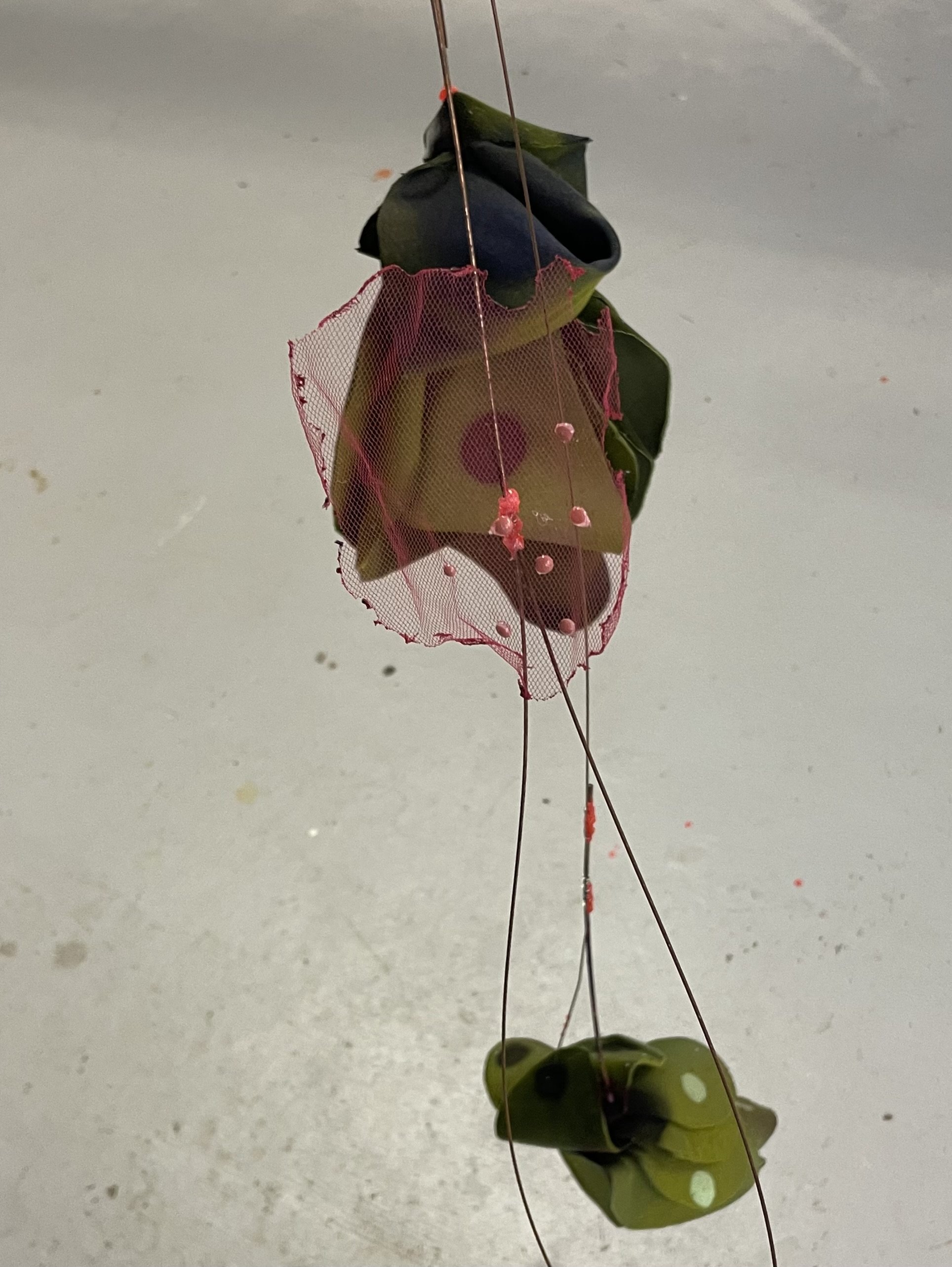
THE INTERVIEW
Capucine Merle
1. Could you share a bit about your background and what led you to start your art practice?
So, after high school, I started with a year of preparatory classes at the Pablo Picasso School for my portfolio, and then I was accepted at Beaux Arts de Paris in 2021. Now it's my fourth year here.
2. What themes does your work explore?
I think the most important themes are femininity, the observation of the time, what is missing, and what is added. I really like the pictorial treatment of emotion, and I like to play with different notions of, like, fragility and danger, preciousness, and simplicity.
In the past year, I started to think about the link between emotion and the potential taste of materials. So when I work, I sometimes ask myself, ‘Oh, what is the taste of that? What’s the sensation on my mouth? Is it a fun test for me to try it ?’ I like to imagine new associations of imaginary tastes. I think this is a new subject for me.
Q: Can you expand on what you mean by what is missing and what is added?
When I say what is missing and what is added, I mean time. Time that passes. It’s an obsession. Time removes elements—for example dryness, wear. But it can also bring back, blow, and stack elements. New life came, new colors, new texture, new smells, new landscapes. I like to watch and play with these codes.
When I started, I was obsessed with flowers and mold. I started to create mold and to let my flowers, plants, and personal objects rot, and I thought it was magic sometimes because these new things came.
Q: Can you talk a bit about how you started using flowers in your work?
Actually, I started because I grew up in the mountains in the French Alps, and I always had flowers around me. Recently, I found in my grandma's stuff, a very old box with dried flowers, and actually, she’s kept them for more than twenty years. She gave them to me, and that was the starting point, the beginning.
3. How has your work evolved over the years, and what has influenced these changes?
I started school with paintings of places with mysterious and ghostly atmospheres that I arranged in space. I was working on the ambiguity between real and false places. I wanted to create objects that potentially came from these spaces. Then I started to make sculptures and to do some of what I said before, with my obsession about time and flowers and, and all of that.
I tried to do some very quiet and discreet installations with my fragile, temporal experiments. After having used real végétaux, I decided to create mine—my own flowers. I use diverse materials, and it's become more like hybrid forms—now it's sculpture, installation, poems, some parts of memories and feelings.
For the second part of the question, I think it's when you talk with people from everywhere, you change your mind on a lot of things, and, I don’t know, the school changed me also. It's a freedom, a place for freedom, so you realize that everything is possible. You can work on anything and do it however you want.
4. Where do you find inspiration for your work?
I think I find it everywhere. I want to find it in a song, in a picture—whether it’s a personal picture or not—in memories, in talks with people, when I read poems, when I watch a movie. When I feel, I take notes, and maybe it's gonna be used for the next pieces or something like that.
5. Can you walk us through your creative process and how you bring an idea to life?
At first, in a very continuous way. I write a lot, and I take notes, and I draw, so I keep it like an archive. When I go to the studio again, I want to experience it all in a very hands-on way. I take all of it out, and I need to touch it, and to see everything.
So, it happens like that. In general, I have a very strong emotion in mind, or I don't know… I want to transcribe something from my life with texture and colours, so I think about that and I try to make connections between elements. It's very spontaneous.
At first, it's like a visual balance, and with time, I think about something more precise, and the forms make more sense. When it's done, I like to write some poems or some texts or impressions. And most of the time, I realize that I was thinking about what I saw.
6. What is the project you’re most proud of to date?
I think my third-year diploma is my favorite project, because it's a bigger one. It was in a little room, and I put a really black carpet on the floor with a lot of pieces. It was a very intimate room. The smell was very strong—it was a fennel smell. The lights were dim, and, I don't know, it was a very nice moment for me—with love, with happiness. It was the end after a few months of work and reflection and stress, and I was very excited.
Q: What was that project about?
It was a story I presented to the jury, a story mixed between a garden and a room after a big storm, and it was like a performance. It was my first time doing that, so I was super excited, but very stressed, stressed, stressed.
I explained to the jury the story of the storms and what is still here and what is gone. I spoke about treasures, dancing, plants and intimacy. At the end, I tell them how hungry I am, that I am starving. It was a fantasized hunger, and so for the project, there were sculptures on the floor, in suspension, and on the wall, behind doors in the closets—everywhere. It was almost like an egg hunt, a treasure hunt in the spring month.
Q: What interested you about the idea of storms?
There are several things that interest me with the idea of the storm. First, it is an external element that you cannot control, which prepares itself, expands, approaches and passes through. It is a strong and violent dance, but also invigorating and beautiful.
One is often a spectator of this tumult, unable to do anything.
The question of sustainability arises. It impacts my practice through issues related to preservation and the codes used.
For example, working in the middle of a dense city with fragile plant materials requires me to move litttle and pay particular attention to the materials I use to try to preserve my sculptures. It’s funny, because I insist on using living beings in the city—plants or insects—but I also use urban, processed, worn-out materials. Storage is also part of sustainability, I think. It has to be taken into account. Space is limited. I think I consciously and unconsciously built my pieces around these points. They fold, unfold or are standard size for storage boxes. I have not yet thought about the meaning of their size.
The codes of sustainability in my opinion, are this mix between resistance over time and low impact created. It would be interesting to see how my work will be preserved in 5, 10 years
The durability and fragility of materials interest me because they are complementary. They balance. These notions evoke solidity, firmness and life, beauty.
7. Do you see yourself staying in Paris long-term, or are there other cities that inspire you to work there?
No, I really like Paris. I think, after my fifth year diploma, I will stay for a few years to work, but long term, no. There are others cities with more opportunities in link with my sensibility. Landscapes are very important for the imagination. I would like to travel around Europe and the world—maybe for residences or just to meet people.
8. What would you like to accomplish in the next few years?
I think I want to do a lot of things. I would like to meet people from everywhere and do some new projects in experimental spaces.
I want to travel and be happy in my practice, I think.
9. If there’s one thing you hope people take away from your work, what would it be?
In the most beautiful world, maybe a little bit of joy and beauty… an impression of joy and beauty, I think. Something sweet, I hope.

